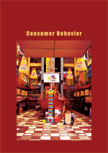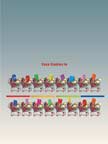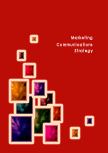Consumers Behavior
 |
Details
Chapter Code: CBC17
Textbook:
210 X 275 mm approx.
Short Case Studies
Detail Table of Contents
Workbook:
Pages : 304; Paperback;
210 X 275 mm approx
Pricing
Textbook Price: Rs. 750;
Workbook Price: Rs. 700;
Shipping & Handling Charges: Rs. 50 per book;
Books Available only in INDIA
Chapter Price : Rs. 100
To download this chapter in electronic format, click on the button below,
and select the chapter from the list of available chapters.
Buy Now
To order the entire book click on the button below, and select the book from
the list of available books:
Please allow 5 to 10 days for delivery of the
Book.
Consumer Behavior : Chapter 17
SUMMARY:
Communication is an essential element of marketing. The main elements of a communication model are the sender, the message, the channel, the receiver, and the feedback. The sender or the marketer (commercial or non-profit organization) encodes the message (generally a marketing communication) and sends it to the receiver (target audience) through a medium (newspaper, radio, television, the Internet, etc.).
|
|
The target audience measures the credibility of the source based on numerous factors like past performance, public image and reputation, quality of goods and services, initiatives taken for social welfare, the brand ambassador, and the image of the medium.
The comprehension and mood of the target audience is another important factor that influences the interpretation of marketing communication. The comprehension depends on characteristics of message, the ability of the receivers to process it, their motivation to process it, and their personal characteristics like past experience and learning, attitude, personality, perception, etc. The consumer mood can impact the interpretation of the message and can be influenced through the use of various advertising appeals.
Communication is often not perceived the way it is intended by the marketers due to some barriers to communication like selective viewing (channel surfing, interrupted viewing, etc.) and noise (disturbances in the message which are not included by the marketer).
To develop persuasive marketing communication, marketers must first identify the target audience (users, nonusers, etc.) they want to address through the communication. They then have to decide on the objectives of the communication (build reputation, increase sales, brand recall, etc.), message design (structure and presentation), and media planning (print, television, radio, etc.).



